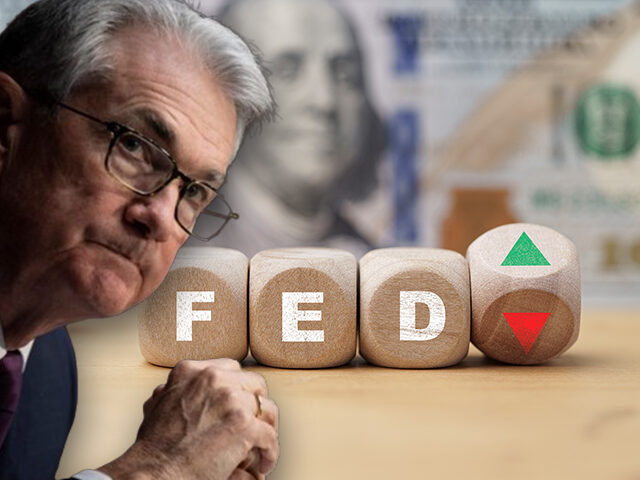The Market Spies a Rate Cut Coming
The market is convinced the Federal Reserve will start cutting rates in the first half of next year. That’s not as crazy as it sounds.
Federal Reserve officials insist that they have not yet begun talking about cutting interest rates. Minnesota Fed President Neel Kashkari, now one of the most hawkish voting members of the Fed’s monetary policy committee, insisted in an interview on Monday that the Fed might even raise rates next year.
The market is not buying it. Fed funds futures imply that there is a slight chance of one additional hike. Currently, swaps prices imply around a 10 percent chance of a hike in December and a slightly higher chance that hike gets pushed back to January. There’s no chance of tightening beyond that, according to swaps prices.
There’s not even much of a chance that the Fed holds its benchmark at the current range of 5.25 percent to 5.50 percent through the first half of the year. As of Wednesday, swaps prices implied just a 24 percent chance of the Fed holding the target at the current level through the May meeting and a four percent chance of the benchmark being one-quarter point higher. The odds of one or more quarter-point cuts stand at nearly 73 percent.
Inflation Is Still High, But the Fed May Cut Anyway
Almost no one thinks that inflation will have fallen all the way down to the Fed’s two percent target by next May. The University of Michigan’s survey of consumer sentiment reflects expectations for prices to rise 4.2 percent over the next year. The Fed’s last set of projections, released back in September, show inflation falling to a 2.5 percent rate by the end of the year.
So, why would the Fed ease? In the Fed’s view, interest rates are well into restrictive territory, meaning they are holding back economic growth and depressing employment. Over the long term, the Fed thinks the appropriate target for the federal funds rate is 2.5 percent. In other words, right now the target is more than twice as high as the Fed thinks will be typically appropriate for an inflation rate of two percent, an unemployment rate of four percent, and a growth rate of 1.8 percent.
This gives the Fed a dovish bias relative to current rates. If the Fed sees signs that the economy is “normalizing,” it is likely to take the opportunity to bring the fed funds rate down toward normal as well.
What’s more, the Fed views declining inflation itself as a tightening of financial conditions. As expected inflation falls, the so-called “real interest rate” increases. So, if the Fed wants to keep the real rate steady, it will need to cut if inflation is falling.
The Sahm Rule May Point to Recession
There is also a real possibility that the labor market will weaken enough to worry Fed officials. The unemployment rate rose by four-tenths of a percentage point between July and September, even as the economy grew at a nominal 8.5 percent rate. October’s employment report put the rate at 3.9 percent, which is higher than the 3.8 percent median year-end projection in the Federal Open Market Committee’s September summary of economic projections.
“Relatively small increases in the unemployment rate, even starting from low levels, typically signal a recession. Where we are now is insufficient to make that call, but it’s worrisome,” economist Claudia Sahm reminds us in a recent opinion piece for Bloomberg.
Sahm is best known as the author of the “Sahm Rule” for predicting recessions. It holds that when the three-month average for unemployment moves a half a percentage point above the 12-month low, we are likely to be in a recession. Although the rate is already 50 basis points above the 3.4 percent low seen earlier this year, the three-month average is just 33 percent above that level. So, it is unlikely that we are in a recession now.
But it would only take a few more months of unemployment holding at this level for the Sahm Rule to trigger. And while Sahm herself says it is possible that her rule could be mistaken this time, Fed officials are likely to take the threshold seriously. If we enter next year with unemployment above four percent and climbing, the Fed might feel a preemptive cut would be appropriate.
This could have adverse consequences. A rate cut as early as next spring would likely revive inflation and lead to further rate hikes down the road. The Fed would be better served holding rates where they are or hiking further until it is perfectly clear that the threat of inflation has been snuffed out. But just as the Fed underestimated the strength of inflation when it began to rise in 2021, we expect it will underestimate it again in the coming year.
Programming Note: The Breitbart Business Digest will be on hiatus until Monday, November 20.

COMMENTS
Please let us know if you're having issues with commenting.